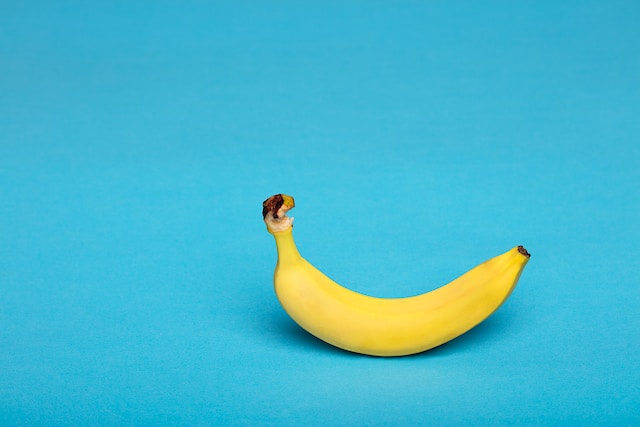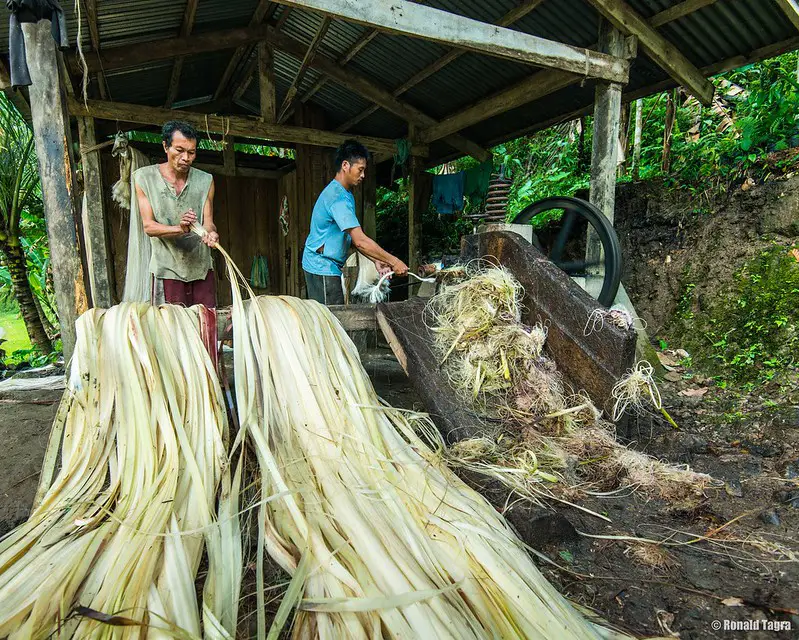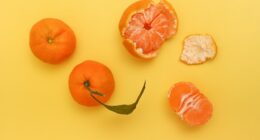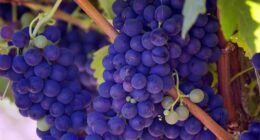Banana is primarily known for its fruit, but it also has a variety of industrial uses including producing fibers that can be used in textiles. Abaca on the other hand is mainly cultivated for its fiber which is known for its strength and durability.
Banana
(Photo by Deon Black on Unsplash )

Bananas are one of the most popular and widely consumed fruits in the world. They grow on a plant that can reach up to 30 feet tall and produce bunches of fruit called hands. These hands can contain anywhere from 10 to 20 individual bananas.
One unique feature of bananas is their versatility – they can be eaten raw, cooked, or even used in baking. Because of their high potassium content, they are often recommended as a healthy snack for athletes.
But it’s not just humans who enjoy bananas – many animals also consume them as part of their diet. For example, monkeys are well-known for their love of this sweet fruit.
Interestingly, there are over 1,000 different varieties of bananas worldwide. While many people may be familiar with the Cavendish variety sold in supermarkets around the globe, other types like red banana and finger banana offer distinct flavors and textures that may surprise you if you give them a try!
Abaca
Abaca is a type of banana plant that is known for its strong and durable fibers. These fibers are extracted from the plant’s stem and then processed to create various products such as rope, twine, paper, clothing, and more. Unlike regular bananas which are grown for their fruit, abaca plants are cultivated mainly for their fiber.
The use of abaca dates back centuries ago where it was first discovered in the Philippines. It has since become an important cash crop in many countries including Ecuador, Costa Rica, Indonesia, and Papua New Guinea. In fact, the Philippines alone accounts for over 85% of the world’s supply of abaca fiber.
Abaca is known for being one of the strongest natural fibers available today with high tensile strength and resistance to water damage. This makes it ideal for use in marine applications such as fishing nets or ship ropes. Additionally, it is also used in manufacturing specialty papers due to its ability to absorb ink well.
One interesting fact about abaca is that unlike synthetic materials which can be harmful to the environment when disposed of improperly; abaca products can decompose naturally without causing harm to our planet. As consumers become increasingly conscious about sustainability issues; we may see more demand for eco-friendly products made from this versatile material.
Abaca may not be as popular or widely consumed like regular bananas but its importance should not be overlooked given how useful this plant can be especially in terms of creating sustainable alternatives in various industries.
Banana Vs. Abaca – Key differences
Banana and abaca are two different plants, but they have some similarities. Both of them belong to the family Musaceae, which makes them related to each other. Despite this similarity, there are significant key differences between banana and abaca.
Firstly, bananas produce fruits that we can eat, while abaca does not. Bananas are popular fruit for eating raw or cooking in various dishes like smoothies or banana bread. On the other hand, we use fibers from abaca leaves instead of its fruit.
Another difference is their cultivation process. Banana trees grow quickly and require abundant water supply compared to Abaca’s slow-growing nature that requires a specific environment with perfect soil conditions.
Moreover, banans come in many varieties such as Cavendish and plantains while there is only one variety of abaca suitable for commercial production known as “Musa textilis.”
Bananas have a more extensive range of uses than Abacas such as food products including candy bars and chips apart from just being consumed fresh.
Bananas differ significantly from Abacas despite belonging to the same family (Musaceae). While bananas bear edible fruits with diverse varieties used in several cuisines worldwide alongside canned goods production; on the other hand ,Abacas do not bear edible fruits but provide highly beneficial fiber extracted from their leaves hence making it an essential material utilized globally by industries producing textiles, papers among others .
What fiber can we get from abaca and banana?
Abaca and banana are two tropical plants that have been used for centuries for their fibrous properties. Both plants produce high-quality fibers, but they differ in terms of texture, strength, and durability.
Banana fibers are obtained from the stem of the plant. These fibers are soft, lustrous, and lightweight. They can be easily processed into yarns or textiles that are suitable for a wide range of applications such as clothing, home furnishings, and paper products.
On the other hand, abaca fibers come from the leaf sheaths of the plant. The fiber is extracted by stripping off the pulp layer to reveal long white strands which are then washed and dried before being spun into various products like ropes, twines mats etc.
The resulting fiber is strong yet flexible making it ideal for use in cordage industries like rope-making.
The unique properties of both these natural fibers make them highly sought after by manufacturers who want to create sustainable products with a lower environmental impact than synthetic materials.
What is abaca used for?
Abaca, also known as Manila hemp, is a versatile fiber that has been used for various purposes throughout history. One of the most common uses of abaca is in the production of high-quality paper products. Abaca fibers are strong and durable, making them ideal for producing fine paper that can withstand wear and tear.
Aside from papermaking, abaca fibers are commonly used in the textile industry to produce clothing, bags, carpets, and other textiles. The unique properties of abaca make it an excellent material for weaving into fabric due to its strength and resistance to water damage.
In addition to these traditional applications, abaca has found new uses in recent years as a sustainable alternative to plastic materials such as straws and bags. Due to its biodegradable nature, abaca-based products have become increasingly popular among environmentally conscious consumers who want to reduce their carbon footprint.
Abaca’s versatility makes it one of the most valuable crops grown today with endless possibilities on how we can use this incredible plant.
How many types of abaca are there?
Abaca is a type of banana plant that produces strong and durable fibers used for various purposes. There are actually several types of abaca, each with slightly different characteristics.
The most common type of abaca is the Manila hemp variety, which comes from the Philippines and is known for its high quality and strength. Another type is Sinamay, also from the Philippines, which has a finer texture and is often used in fashion accessories like hats and bags.
Other varieties include Bicolana abaca from Bicol region in the Philippines, Kokeo abaca from Hawaii, Mauritius Fiber from Mauritius Island in Africa among others. Each variety offers unique properties that make them suitable for specific applications such as textiles, paper products or cordage.
Understanding the different types of abaca can help you choose which one will work best for your needs whether it’s making crafts or producing goods on an industrial scale.
What countries produce abaca?
Abaca is a plant that is primarily grown in tropical countries, and the demand for it continues to rise due to its many uses. The Philippines is the largest producer of abaca fiber in the world, accounting for around 85% of global production. Other countries such as Ecuador, Costa Rica, and Indonesia also produce abaca but on a much smaller scale.
In the Philippines, abaca has been cultivated since the Spanish colonial era and has always been an essential part of their economy. The country’s warm climate and rich soil make it perfect for growing high-quality abaca plants. Abaca farming provides employment opportunities for thousands of Filipinos, especially those living in rural communities.
Ecuador is another significant producer of abaca fiber; however, their output pales in comparison to that of the Philippines’. Despite this fact though Ecuadorian farmers continue to cultivate small areas with this crop mainly because there are still markets willing to purchase it.
Costa Rica also produces small amounts of abacá; they mostly use them locally as handicrafts material or exported raw fibers. Lastly -Indonesia- since Abacas were introduced by Dutch colonisers about two centuries ago now turned out producing limited quantities from selected regions.
These countries share one thing: ideal conditions which allow them to grow healthy and robustly-abundant crops every year making even more markets available over time!
Featured Image By – Ronald Tagra on Flickr









